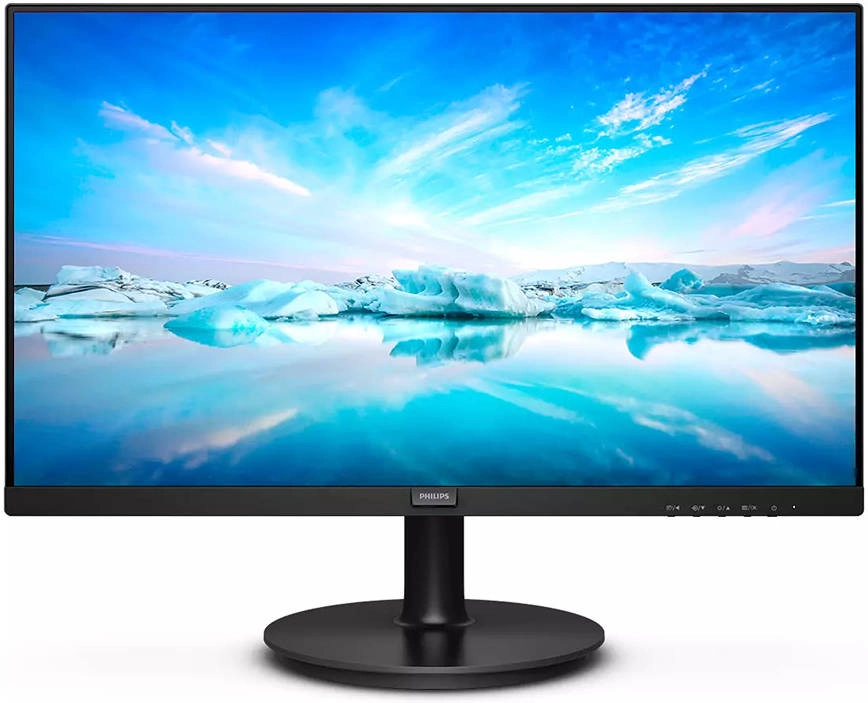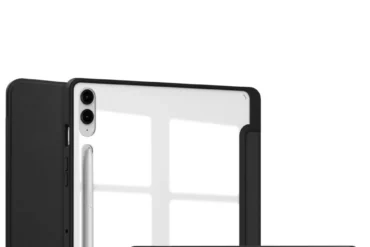Philips 241V8L 24″ FHD VA Monitor Review – 75Hz, Adaptive Sync

Philips 241V8L 24″ FHD VA Monitor Review
Table of Contents
Introduction
The Philips 241V8L is a 24-inch FHD monitor aimed at users seeking a balanced blend of features and affordability. It boasts a 75Hz refresh rate, 4ms response time, Adaptive Sync technology, and eye-comfort features like Flicker-free and LowBlue Mode. In this comprehensive review, we’ll delve into its strengths and weaknesses to see if it’s the right monitor for you.
Features
The Philips 241V8L packs a punch when it comes to features, considering its price point. Let’s break down some of its key highlights:
- VA Panel: The VA (Vertical Alignment) panel technology provides good contrast and deep blacks, offering an immersive viewing experience for movies and games.
- 75Hz Refresh Rate: This refresh rate delivers a smoother visual experience compared to standard 60Hz monitors, especially noticeable in fast-paced games and scrolling through documents.
- 4ms Response Time: The 4ms response time ensures minimal motion blur during gameplay, reducing ghosting and improving overall responsiveness.
- Adaptive Sync: Adaptive Sync (FreeSync) technology eliminates screen tearing and stuttering, providing a seamless and fluid visual experience during gameplay and video playback.
- Eye Comfort Features: Flicker-free technology reduces eye strain by eliminating screen flicker, while LowBlue Mode reduces harmful blue light emissions, promoting better sleep and eye health.
- Connectivity Options: The monitor offers VGA and HDMI ports, catering to various devices and setups.
Performance
The Philips 241V8L delivers solid performance for everyday use, gaming, and multimedia consumption. The VA panel’s contrast ratio and color accuracy are satisfactory, resulting in a visually pleasing experience. The 75Hz refresh rate and 4ms response time make a noticeable difference in games, especially those with fast-paced action. The Adaptive Sync feature further enhances the gameplay experience by eliminating screen tearing. While the monitor doesn’t offer the same level of color accuracy or high refresh rate as high-end gaming monitors, it delivers a solid performance for its price point.
Pros & Cons
Here’s a breakdown of the Philips 241V8L’s strengths and weaknesses:
Pros:
- Excellent contrast ratio and deep blacks.
- Smooth 75Hz refresh rate for improved visuals.
- Responsive 4ms response time for gaming.
- Adaptive Sync (FreeSync) eliminates screen tearing.
- Eye comfort features like Flicker-free and LowBlue Mode.
- Affordable price point for the features offered.
Cons:
- Color accuracy could be better for professional work or color-critical tasks.
- Limited viewing angles for VA panels.
- No built-in speakers.
Final Verdict
The Philips 241V8L is a solid monitor that delivers a satisfying viewing experience for everyday use, gaming, and multimedia consumption. Its 75Hz refresh rate, 4ms response time, Adaptive Sync, and eye comfort features make it a compelling choice at its price point. While color accuracy might not be ideal for professional work, it’s a decent performer for casual users and gamers. Overall, if you’re looking for a budget-friendly monitor with good features and performance, the Philips 241V8L is a strong contender.
Specifications
| Feature | Specification |
|---|---|
| LCD panel type | VA LCD |
| Backlight type | W-LED system |
| Panel Size | 23.8 inch / 60.5 cm |
| Display Screen Coating | Anti-Glare, 3H, Haze 25% |
| Effective viewing area | 527 (H) x 296.5 (V) |
| Aspect ratio | 16:9 |
| Maximum resolution | 1920 x 1080 @ 75 Hz* |
| Pixel Density | 93 PPI |
| Response time (typical) | 4 ms (GtG)* |
| Brightness | 250 cd/m² |
| Contrast ratio (typical) | 3000:1 |
| SmartContrast | Mega Infinity DCR |
| Pixel pitch | 0.2745 x 0.2745 mm |
| Viewing angle | 178º (H) / 178º (V) @ C/R > 10 |
| Flicker-free | Yes |
| Display colors | 16.7 M |
| Scanning Frequency | 30 – 85 kHz (H) / 48 – 75 Hz (V) |
| LowBlue Mode | Yes |
| EasyRead | Yes |
| sRGB | Yes |
| Adaptive sync | Yes |
| Signal Input | VGA (Analog ) |
| Sync Input | Separate Sync |
| Audio (In/Out) | Audio out |



























